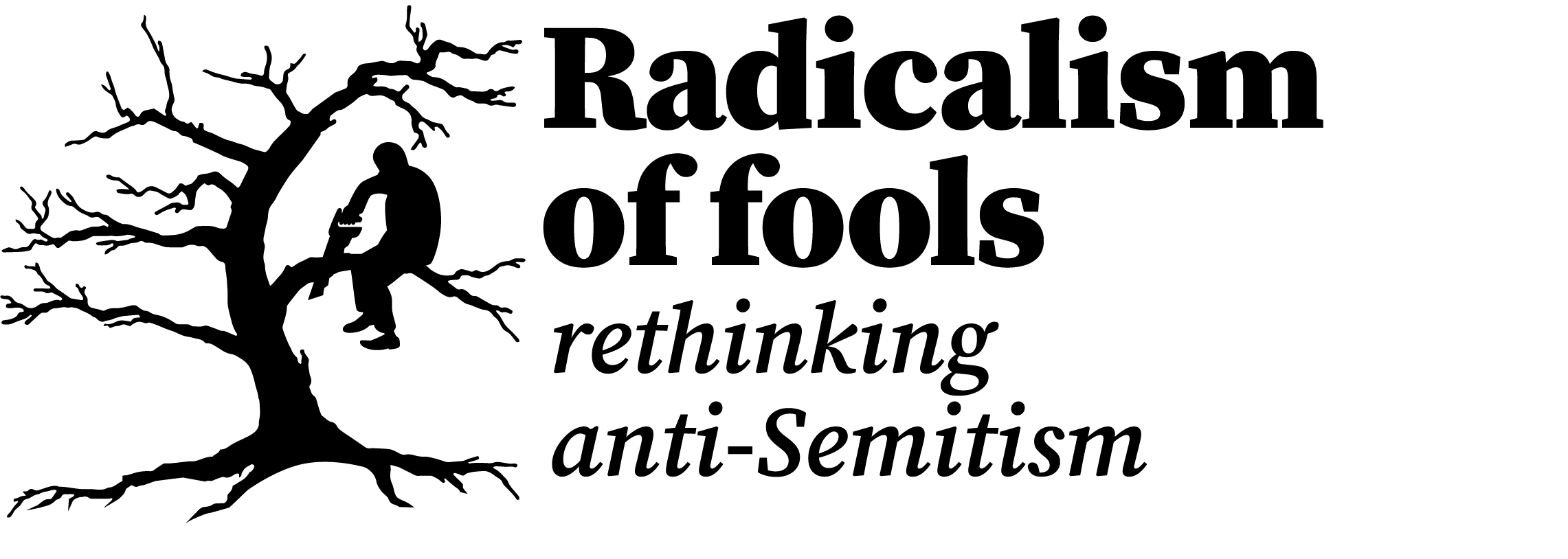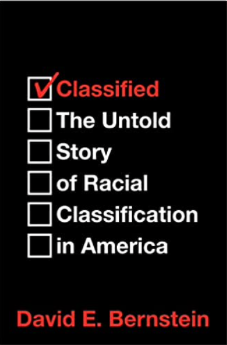After publicising my review of David L Bernstein’s Woke Antisemitism I got an unexpected response from his near namesake, David E Bernstein, a professor at George Mason University. Professor Bernstein suggested that if I was interested in woke anti-Semitism I might also want to check out his book on racial classification in America.
The latter David Bernstein was right. I have not read Classified yet but I have watched a video presentation (see below ) on it in organised by the Jewish Institute for Liberal Values (run by the first David Bernstein). Typically nowadays people tick the ubiquitous racial classification boxes on forms without thinking about it. But anyone interested in politics – in its broadest terms - would do well to dig deeper.
The subject is particularly pertinent at a time when racism is often discussed as a clear-cut black and white issue. It raises the question of whether that is indeed the best way to understand racial discrimination.
It also raises difficulties in relation to understanding anti-Semitism (the discussion of how this subject relates to the Jewish question starts at about 43 minutes into the recording). The overwhelming majority of American Jews are white. But a simple binary between black and white cannot account for the Jewish experience let alone explain Jew hatred.
The main thrust of Classified is that the current system of racial classification in America is arbitrary and has taken on a life of its own. Professor Bernstein points out that, although people usually self-identify as members of particular groups, the federal government promulgated official legal definitions in the mid-1970s. He says the authorities first started using classification in the 1950s and 1960s with the limited purpose of helping to collect uniform data on discrimination. These covered areas such as education, employment and voting. It was not claimed that the categories had any scientific salience.
It was only later that the categories began to be used to facilitate affirmative action policies (or what in Britain would be called positive discrimination) and for a wide range of other purposes. Today the discussion is often framed in terms of promoting equity between different racial groups.
Since the government introduced its official classification system institutions have tended to pragmatically go along with it rather than devising their own categories. For example, universities, although free to create their own classification system, have generally used the official ones. It is a classic example of using the statistics that are available rather than considering whether they are logical in that context.
Professor Bernstein makes a strong case that they do not really make sense. For example, Asians and Latinos were for a long time considered racially white. It is only relatively recently they have been considered categories in their own right.
If these categories are examined in more detail it becomes even clearer that they are not rational. For example, Afghanistan, and Israel for that matter, are both geographically in Asia but people from these countries are not categorised as Asian. It is also questionable whether South Asians, such as Indians and Pakistanis, should be grouped together with East Asians, such as Chinese or Japanese.
In relation to Hispanics many do not think of themselves primarily as Latino, let alone Latinx as some have labelled them. In ethnic terms they could be black, white, Asian, indigenous or some combination of the various groups. Professor Bernstein also points out the classification did not even exist as a separate category 50 years ago. Even nowadays they still generally prefer to be called, say, Mexican American or simply American.
African Americans too are more divided than is generally assumed. Professor Bernstein estimates that 10% of those who identify as African Americans were born abroad – coming, for instance, from Africa or the West Indies. Such migrants will in turn have children whose history is not that of American slavery. Then there is a substantial number of those classified as black who have one white parent or grandparent. All this means that African American, as a racial classification, is a poor proxy for descendants of slaves. A significant proportion do not have slavery in their ancestry. Anyone doing a sociological study on the descendants of slaves would be unwise to assume all American blacks fit into that category.
Of course there may be times when it does make sense to classify different populations into particular groups. For example, by genetic characteristics for those doing medical research or in socioeconomic terms for those doing sociological research. But the standard classifications are not fit for purpose for such tasks.
Professor Bernstein notes in relation to anti-Semitism that nowadays many young people assume Jews have not suffered discrimination as they are generally white. Yet in the past Jews were often banned from social organisations and subject to restrictive quotas at universities. They also at one time found it almost impossible to get jobs in certain sectors such as insurance and banking. One reason Jews started Hollywood was because it was a new industry so there were no established barriers to entry.
Nor were Jews the only white group to experience discrimination. Irish, Italian and Polish Americans, among others, were often treated as second class citizens in the past.
None of this is to deny that, in America, blacks have generally suffered most including the horrors of slavery and the Jim Crow laws. But it is not a competition. To a significant degree other groups have also been discriminated against.
In the context of European history it is important to note there were relatively prosperous Jews –notably in Germany itself – but they still became Holocaust victims. Affluence does not convey immunity from the worst ravages of bigotry.
America’s official system of racial classification is more of a hindrance than a help in understanding social inequalities. Even worse is the idea that there is a simple binary between privileged whites and oppressed people of colour. It certainly cannot account for the complex phenomenon of anti-Semitism.
Should the government be in the business of classifying people by race? A conversation with Professor E Bernstein. Moderated by Brandy Shufutinsky. Jewish Institute for Liberal Values. Livestreamed 25 July 2022.

